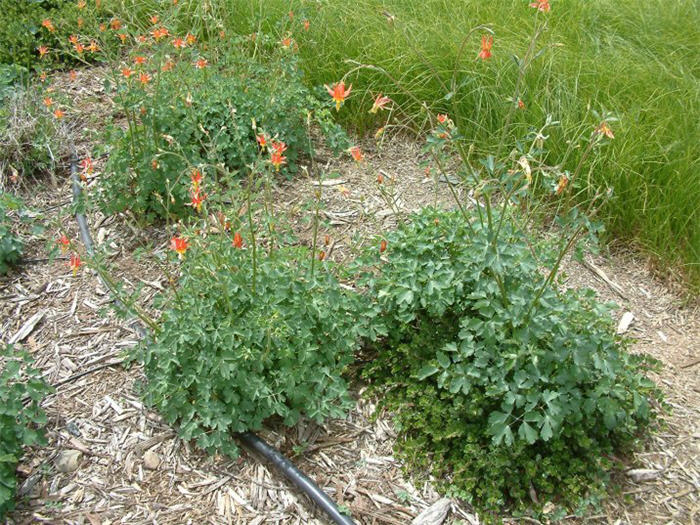| Botanical Name: Aquilegia formosa | |
| Common Name: Western Columbine |

-
Anatomy
-
Culture
-
Design
Plant Type
Perennial
Height Range
1-3'
Flower Color
Red, Yellow, Multi-Colored
Flower Season
Spring, Summer
Leaf Color
Light Green
Bark Color
n/a
Fruit Color
n/a
Fruit Season
n/a
Sun
Half, Shade
Water
Medium, Extra in Summer
Growth Rate
Moderate
Soil Type
Sandy, Clay, Loam, Rocky, Unparticular
Soil Condition
Average, Rich, Well-drained, Moist
Soil pH
Neutral
Adverse Factors
n/a
Design Styles
English Cottage, Meadow, Native Garden, Woodland
Accenting Features
Showy Flowers
Seasonal Interest
Spring, Summer
Location Uses
Perennial Border, With Rocks
Special Uses
Container, Naturalizing, Small Spaces
Attracts Wildlife
Hummingbirds
Information by: Stephanie Duer
Photographer: Steve Mullany/Engstrom
Photographer: Steve Mullany/Engstrom
-
Description
-
Notes
This columbine is noted for its bright red and yellow flowers. The foliage is a pale green with paler undersides, and generally has three lobes. Its habit is clumping, though it may seed if happily sited. Attractive to hummingbirds. A Utah native. Foliage clumps are usually less than 12 inches tall and 24 inches wide, in time. Flowers stand on delicate stems up to 18 inches.
Western Columbine generally prefer shady sites and cooler to moist soils. Like other columbine, they will dormant in the summer if the soil gets too dry for too long. They are also usually a short-lived perennial but are generous reseeders if planted where they are content. Hardy to USDA Zone 3. During blooming, they appreciate regular watering, but as they go dormant, reduce the frequency of irrigation.